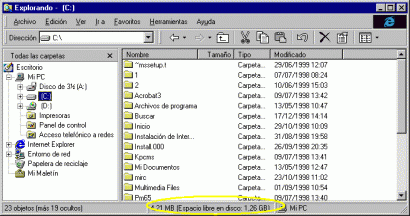 The Digital Versatile Discs or DVDs are compact discs that use technology similar to CD-ROMs, CR-R / RW to store all kinds of data: video, audio, texts, photos, etc.
The Digital Versatile Discs or DVDs are compact discs that use technology similar to CD-ROMs, CR-R / RW to store all kinds of data: video, audio, texts, photos, etc.
For some years now, DVDs were the massive format in which we could buy or rent, for example, movies or TV series. DVD players were the new electronic device that could not be missing in any home.
They were mostly known when films began to be distributed Through this format that, depending on the number of layers and faces it has, provides a capacity from 4.7 GB to 17.1GB.
In this sense, classify on DVD-5, DVD-9, DVD-10, DVD-14, DVD-18, alluding to the approximate storage capacity: 4.7GB (single layer, single sided), 8.5GB (double layer, single sided), 9.4GB (single layer, double sided), 13.3 GB (double sided, single layer and double layer) [very rare], 17.1 GB (double layer and double side). The latter are DVD + R.
When next to a DVD we see the classification "DL", it refers to Double Layer: double layer. This is especially useful for DVD camcorders, which deplete the capacity of the discs quickly (especially Mini DVDs), and in this sense it is necessary to have as much storage capacity as possible.
The "RW" rating means Read / Write, that is, Read / Write: it is about DVDs that can be erased and re-recorded On the other hand, DVD-Rs cannot be erased, although they do accept data aggregation, as long as it has been recorded in multisession and the disc has not been finalized.
Because its use in the sale and rental of movies has been massive, surpassing other forms of data storage, DVDs are often called "Digital Video Disc" or Digital Video Disc. Its diameter is identical to that of CDs: 8 or 12 centimeters.
However, a DVD can be used for any type of storage: we can transport data, or for example save ebooks (digital books) or photos of an event. They can also be used to make backup copies or back up of content that we have on our PC, to avoid loss of data that is important or that we need, in some way to preserve, but take up space on the PC that would be useful to us.
Also, on DVD's, presentations can be made for conferences, congresses or symposia; or make presentations of photos, with audio and also video to reproduce in a particular event (birthdays, weddings) or to give as gifts on special dates.
DVDs store information in the format Universal Disk Format (UDF), ISO 9660 standard, this being an extension of the standard used by data CDs.
An interesting detail to highlight regarding the differences between CDs and DVDs has to do with the fact that the latter use a more efficient error correction method (47% more) allowing the data to be more reliable and durable over time. .
There are various DVD types, according to the kind of material they store: Video, Audio, Data, according to whether they are read-only manufactured by companies: DVD-ROM, or recordable by anyone: DVD-R, RW, RAM.
In the case of human recording, DVDs greatly favored the recording and sale of parallel copies or "trout" of content such as movies or music. Due to its low cost in virgin quality, and the ease of copying content from another DVD or from the PC itself, many benefited from being able to make this type of copies without a license, and sell them in different stores. The cost for a person who wants to see a film, a copy of this type is much cheaper than paying a ticket to the cinema, or even more so buying an original copy of the film. In addition, although there are DVD Clubs that can be accessed to rent movies and watch at home, the fact of buying a DVD ensures that the copy will be our property, and we can watch it as many times as we want.
When we access a DVD-video using a file browser on a PC, we can see two folders: AUDIO_TS which is used for sound, and VIDEO_TS, for video. Inside we can see "Video Objects" files, or VOBs, which have multiplexed video, subtitle and audio chains. In addition, IFO files provide information for navigating the DVD from a player, separating by chapters, etc. All video DVDs are provided with digital restriction systems, or DRM, which have been circumvented by programmers allowing them to be copied.
Although DVD is still very popular, especially because of its inexhaustible reputation as the support for movies that we can see even before they are released in theaters, another storage format has begun its heyday, Blu-Ray. This storage device has a much higher capacity than DVD's: Blu Ray has 25 to 40 Gb of capacity, depending on its single or double layer of recording. However, due to its cost, it has not yet become popular.









